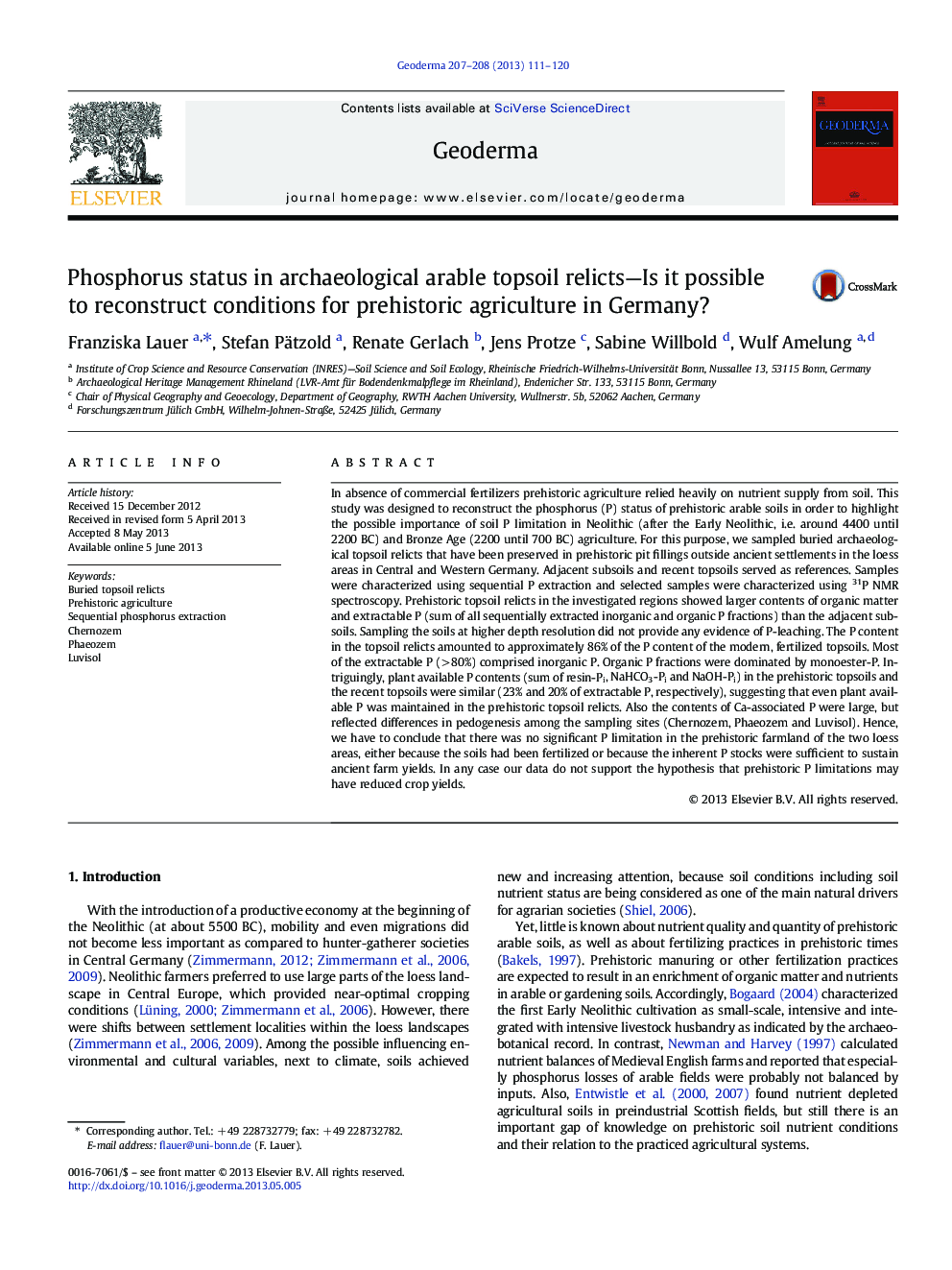| کد مقاله | کد نشریه | سال انتشار | مقاله انگلیسی | نسخه تمام متن |
|---|---|---|---|---|
| 6409157 | 1629482 | 2013 | 10 صفحه PDF | دانلود رایگان |
- Neolithic and Bronze Age arable topsoil relicts are preserved in pit fillings.
- Organic matter and P were enriched in prehistoric topsoils as compared with adjacent subsoils.
- Total P in prehistoric topsoils amounted to 86% of the P content in recent topsoils.
- Plant available P in prehistoric and recent topsoils were similar.
- There is no evidence of P limitation in prehistoric farmland.
In absence of commercial fertilizers prehistoric agriculture relied heavily on nutrient supply from soil. This study was designed to reconstruct the phosphorus (P) status of prehistoric arable soils in order to highlight the possible importance of soil P limitation in Neolithic (after the Early Neolithic, i.e. around 4400 until 2200Â BC) and Bronze Age (2200 until 700Â BC) agriculture. For this purpose, we sampled buried archaeological topsoil relicts that have been preserved in prehistoric pit fillings outside ancient settlements in the loess areas in Central and Western Germany. Adjacent subsoils and recent topsoils served as references. Samples were characterized using sequential P extraction and selected samples were characterized using 31P NMR spectroscopy. Prehistoric topsoil relicts in the investigated regions showed larger contents of organic matter and extractable P (sum of all sequentially extracted inorganic and organic P fractions) than the adjacent subsoils. Sampling the soils at higher depth resolution did not provide any evidence of P-leaching. The P content in the topsoil relicts amounted to approximately 86% of the P content of the modern, fertilized topsoils. Most of the extractable P (>Â 80%) comprised inorganic P. Organic P fractions were dominated by monoester-P. Intriguingly, plant available P contents (sum of resin-Pi, NaHCO3-Pi and NaOH-Pi) in the prehistoric topsoils and the recent topsoils were similar (23% and 20% of extractable P, respectively), suggesting that even plant available P was maintained in the prehistoric topsoil relicts. Also the contents of Ca-associated P were large, but reflected differences in pedogenesis among the sampling sites (Chernozem, Phaeozem and Luvisol). Hence, we have to conclude that there was no significant P limitation in the prehistoric farmland of the two loess areas, either because the soils had been fertilized or because the inherent P stocks were sufficient to sustain ancient farm yields. In any case our data do not support the hypothesis that prehistoric P limitations may have reduced crop yields.
Journal: Geoderma - Volumes 207â208, October 2013, Pages 111-120
